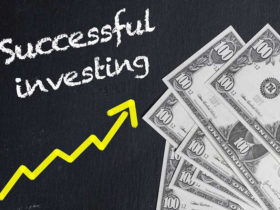Pay-per-click advertising is an interesting topic and an extremely hot topic on today’s marketing scene. It covers all facets of internet marketing and includes data analytics, keyword tools, ad placements, and many other disciplines. As more individuals set out to learn more about PPC advertising, they find out how influential it can really be. Without a doubt, PPC advertising has grown at an exponential rate due to the fact that businesses of all sizes are reaching out for new ways to market their products.
If you’re interested in learning more about how you can get started in PPC advertising, take a moment to examine the following steps. These platforms are easy enough to understand, but they do take some work on your part to make sure that you increase the potential of your campaign. As always, we highly recommend that you proceed at your own pace and find what works best for you.
Creating a good landing page is another reason why PPC advertising is so successful. Your landing page should be directly related to your ads. You want your readers to immediately see what your ads are about right off the bat. One mistake that many businesses make is including images or links to other pages on their site. This is done in an effort to maximize traffic and get more clicks; however, this does nothing to promote your business goals. Make your landing page stand out above and beyond anything else on your website.
Another way to succeed with PPC advertising is to use tracking analytics and other smart tools. Tracking analytics gives businesses an idea of the actual number of clicks on their ads versus the estimated number of impressions. In addition to this, smart tools like Google Analytics will give businesses a comprehensive look at their demographics. With this information, PPC advertisers can ascertain which keywords and ads bring in more revenue than others.
Some people believe that a PPC advertising campaign is not the same as traditional search engine optimization (SEO). While SEO uses both paid and organic search results to boost online exposure, PPC does not use organic results. Instead, PPC advertisers are able to target specific groups of people who are more likely to buy the products or services they are searching for. The goal of a PPC campaign is to drive more traffic to a website, which can lead to more conversions and increased revenue.
If you are unfamiliar with pay-per-click (PPC) advertising, there are two basic types. There are pay-per-sale (PPP) advertising campaigns and pay-per-click (CPC). With PPC campaigns, advertisers only pay when their target keyword(s) are searched. On the other hand, with a pay-per-click (CPC), the advertiser only pays when a visitor to their site actually clicks on a listed advertisement. Both forms of digital marketing strategy can result in different amounts of revenue depending on how much effort and time is spent on developing the campaigns and tracking down the right keywords.
Success with digital marketing strategy requires careful consideration of all the aspects of the PPC campaign. Among these aspects include choosing a profitable keyword or key phrase, creating unique ad copies, testing ads, and keeping track of campaign statistics. Once advertisers have chosen a lucrative keyword or key phrase, they need to develop a compelling ad copy. A well-written ad copy is imperative for any PPC campaign, as it plays an important role in converting visitors into leads and then customers into actual sales. Unique ad copies are also necessary for ensuring success with PPC advertising. Ads that are not well constructed.
There are a number of tools available today that businesses can use to manage their PPC advertising campaigns, including software solutions, online reporting solutions, and integrated reporting systems.















